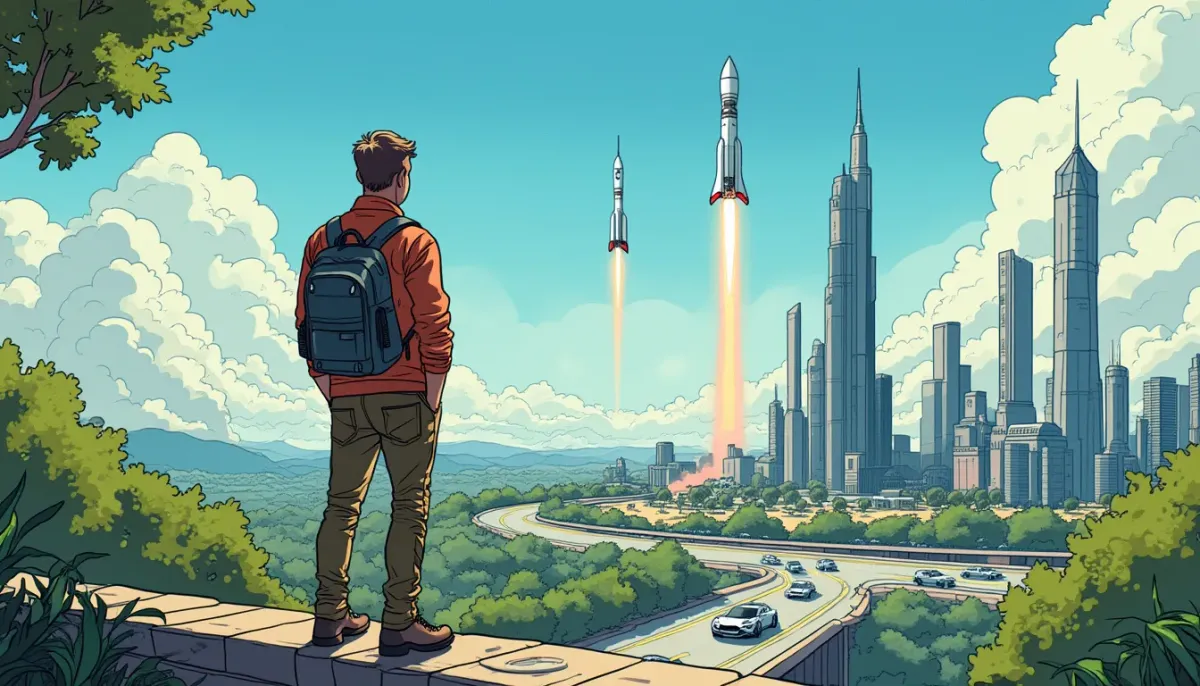Elon Musk: Dreaming Big and Navigating Reality
Elon Musk exemplifies how dreams guide innovative strides, bridging vision with reality across SpaceX and Tesla.

Introduction: Dual Pathways of Innovation
Elon Musk is a name synonymous with ambition and innovation. His ventures, notably SpaceX and Tesla, are emblematic of dreams pushing against the boundaries of what is possible. This notion is captured beautifully in Ben Thompson's article “Elon Dreams and Bitter Lessons.” The piece provides a fascinating narrative of SpaceX’s journey to revolutionize space travel and Tesla's quest for autonomous driving, intertwined with a broader theme of how dreams shape and are shaped by reality.
Musk’s vision, juxtaposed with the realities of competition and technological limitations, offers deep insights into the entrepreneurial spirit and the intricacies of modern technological advancements. In this article, I'll explore my insights and reflections inspired by Thompson's narrative, focusing on how dreams can be both empowering and grounding.
“In a world built on defaults and traditions, Elon Musk illustrates the power of pioneering a vision that defies norms.”
The SpaceX Paradigm: Dreams That Reshape Reality
Pushing the Boundaries
SpaceX, in many ways, started as a dream—a vision to make space travel affordable and accessible. The idea of reusable rockets, landing stages on drone ships, and, ultimately, a mission to Mars seemed implausible a decade ago. Yet, SpaceX has systematically turned dreams into reality, driven by a zealous pursuit of reducing costs and enhancing scalability.
When Richard Bowles of Arianespace described SpaceX's pricing goals as dreams, he wasn't far off. However, the crux of SpaceX's success lies in its refusal to "wake up" from its ambitious vision. As seen in history, every small step—often dismissed by competitors—has built the foundation for larger leaps.
Lessons in Adaptation
The contrast between SpaceX and traditional aerospace companies lies not only in vision but in adaptability. The phrase "cheapness creates scale, which makes things even cheaper," highlights a pivotal insight that traditional business models often dismiss: genuine innovation isn't about competing within existing frameworks but about redefining these frameworks altogether.
Tesla and the Autonomous Dream: Navigating Through Reality
From Vision to Execution
In contrast to SpaceX's soaring saga, Tesla navigates the complex terrains of autonomous vehicle technology. While the excitement surrounding the Tesla Robotaxi was palpable, the reality, as Thompson points out, is more grounded.
The presentation, light on specifics, came as a stark reminder that dreams, while inspiring, demand detail and execution to manifest into reality. The journey from Level 2 to Level 5 autonomy involves not just cutting-edge AI but also regulatory and infrastructural paradigms that need to evolve.
The Bitter Lessons
Rich Sutton’s “bitter lessons” of AI and computation reveal a poignant understanding applicable to Tesla’s technological endeavors. The intersections of AI advancements and autonomous vehicles signify that while human intuition and guided programming offer short-term benefits, long-term scalability hinges on leveraging larger data sets and computational prowess.
Tesla’s neural network-driven vision aims to redefine what it means to achieve autonomous driving at scale. Yet, whether this approach will eclipse Waymo’s sensor-based system remains to be seen. In either case, Tesla embodies the ambition of leading market changes through technology, even if that means reevaluating the approach.
"Musk’s innovative gamble is a testament to the transformative power of a dream anchored in technological foresight."
Reflections on Ambition, Innovation, and Reality
Bridging Dreams and Reality
Musk’s journeys with SpaceX and Tesla are not just about technological breakthroughs. They symbolize a broader narrative: the reconciliation of dreams with the often harsh realities of industry, logistics, and technology. While dreams propel progress, they also demand rigorous groundwork, patience, and adaptability to actualize.
Crafting the Future
Reflecting on Thompson's insights, the essence of innovation becomes clear—it’s as much about the willingness to embrace the unknown as it is about crafting solutions within existing limitations. Musk’s ventures challenge the static perceptions of the aerospace and automobile industries, illustrating that every dream necessitates a blueprint paved with resilience and ingenuity.
In conclusion, while the paths Musk charts for SpaceX and Tesla are fraught with ideational and practical hurdles, they also reflect an aspirational facet of human curiosity and technological advancement. The dreams of today, tempered by the lessons of reality, inevitably become the blueprints of tomorrow.
Final Thoughts
Ben Thompson’s article spotlights the enduring clash between groundbreaking dreams and skeptical reality. As Musk continues to navigate these waters, his endeavors remind us that dreams are not just for visionaries but for those resolute enough to sculpt them into reality. Whether in space or on the roads, the story of innovation and ambition is ever-evolving, fueled by those audacious enough to dream—and act.
Future Perspectives
As companies strive for progress amid evolving technological landscapes, the synergy between visionary thinking and practical execution becomes paramount. How we balance dreams with actionable steps determines not only the future of companies like SpaceX and Tesla but the trajectory of humanity's technological aspirations.
Midjourney prompt for the cover image: A visionary entrepreneur stands overlooking a futuristic cityscape, with rockets launching toward space and autonomous cars navigating below. The setting is a blend of modern skyscrapers and green spaces, viewed from a high vantage point, symbolizing ambition and forward-thinking innovation. Captured in a Sketch Cartoon Style, the mood conveys a blend of determination and hope, capturing the essence of technological evolution inspired by visionary dreams.

